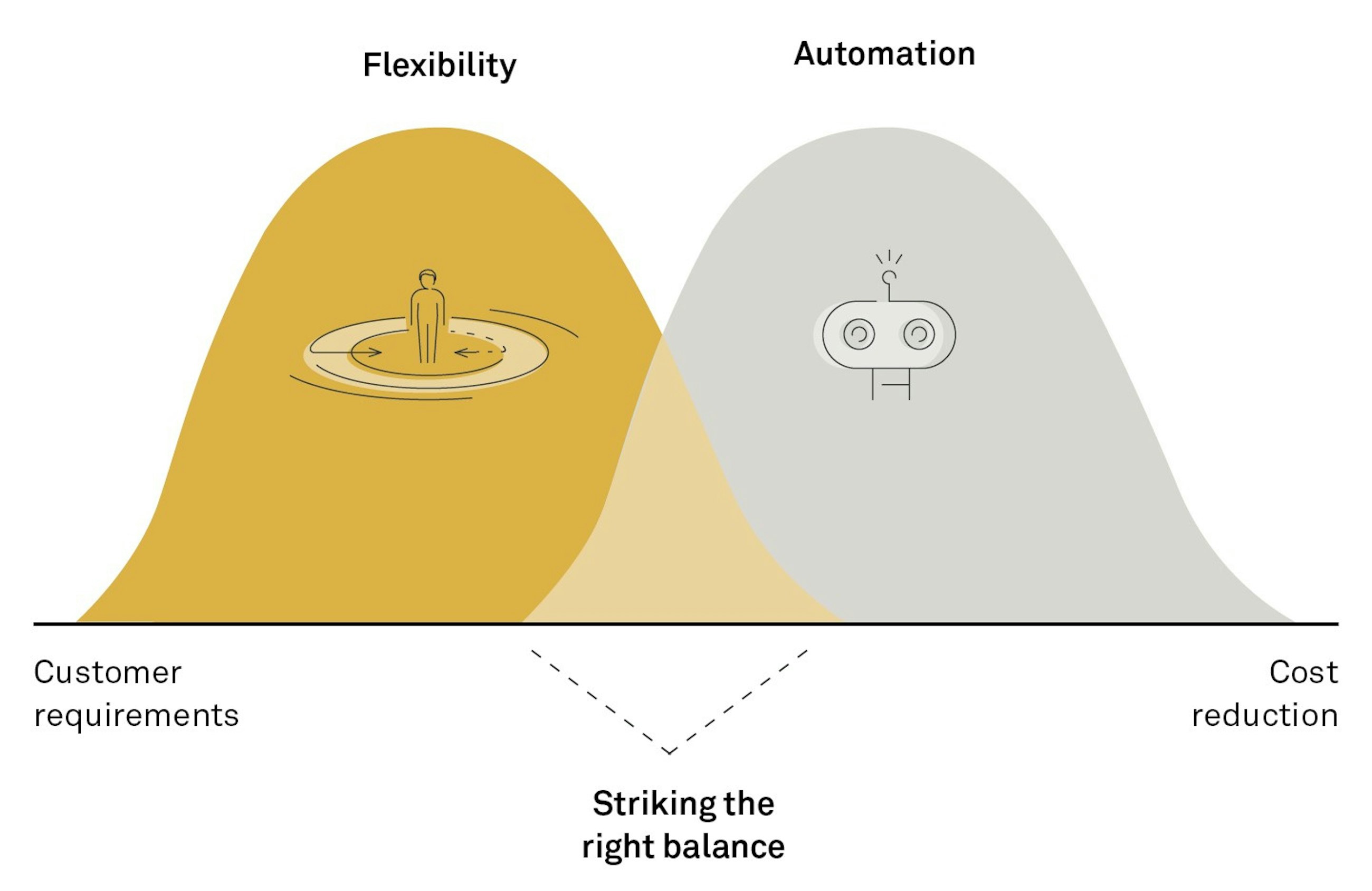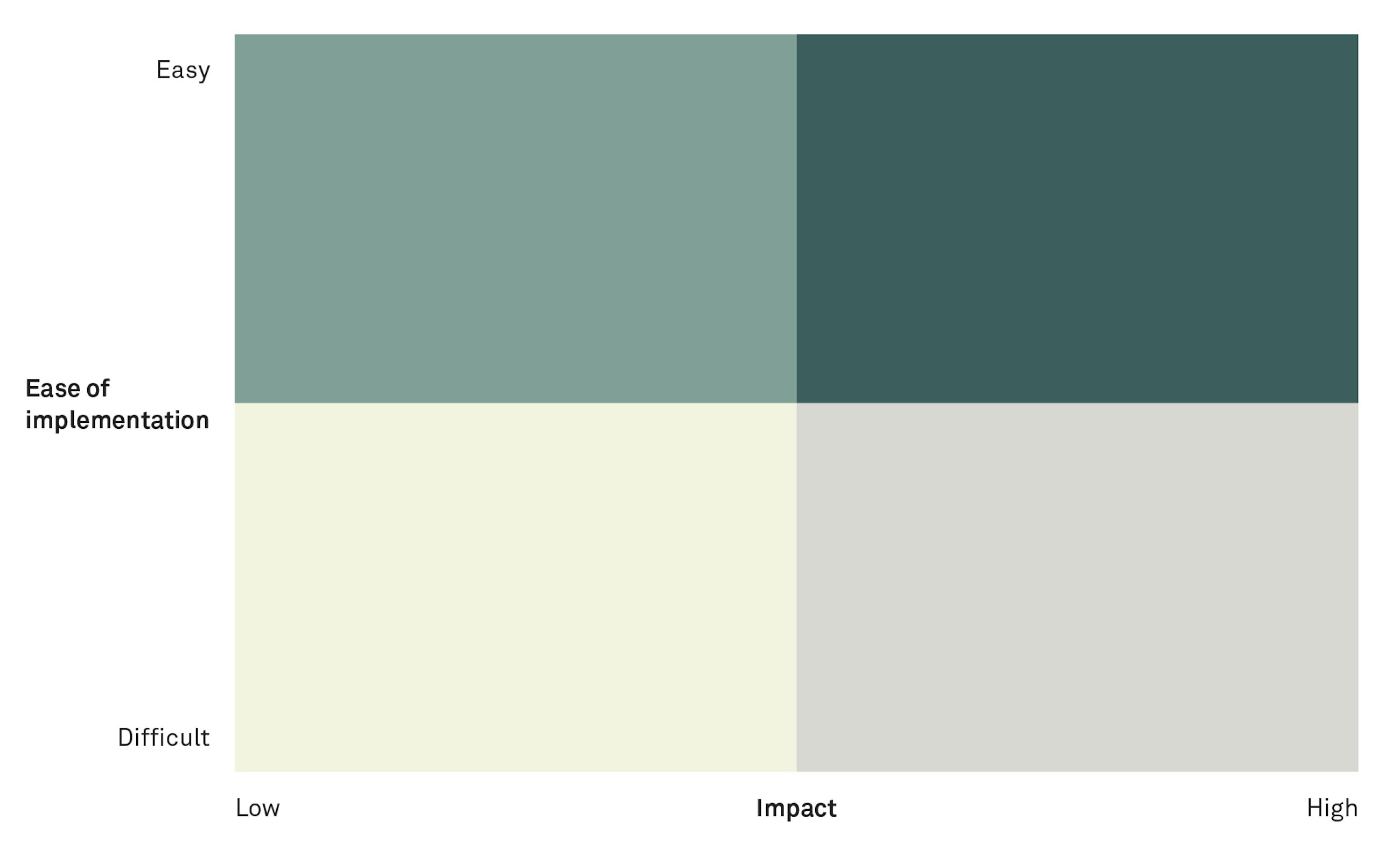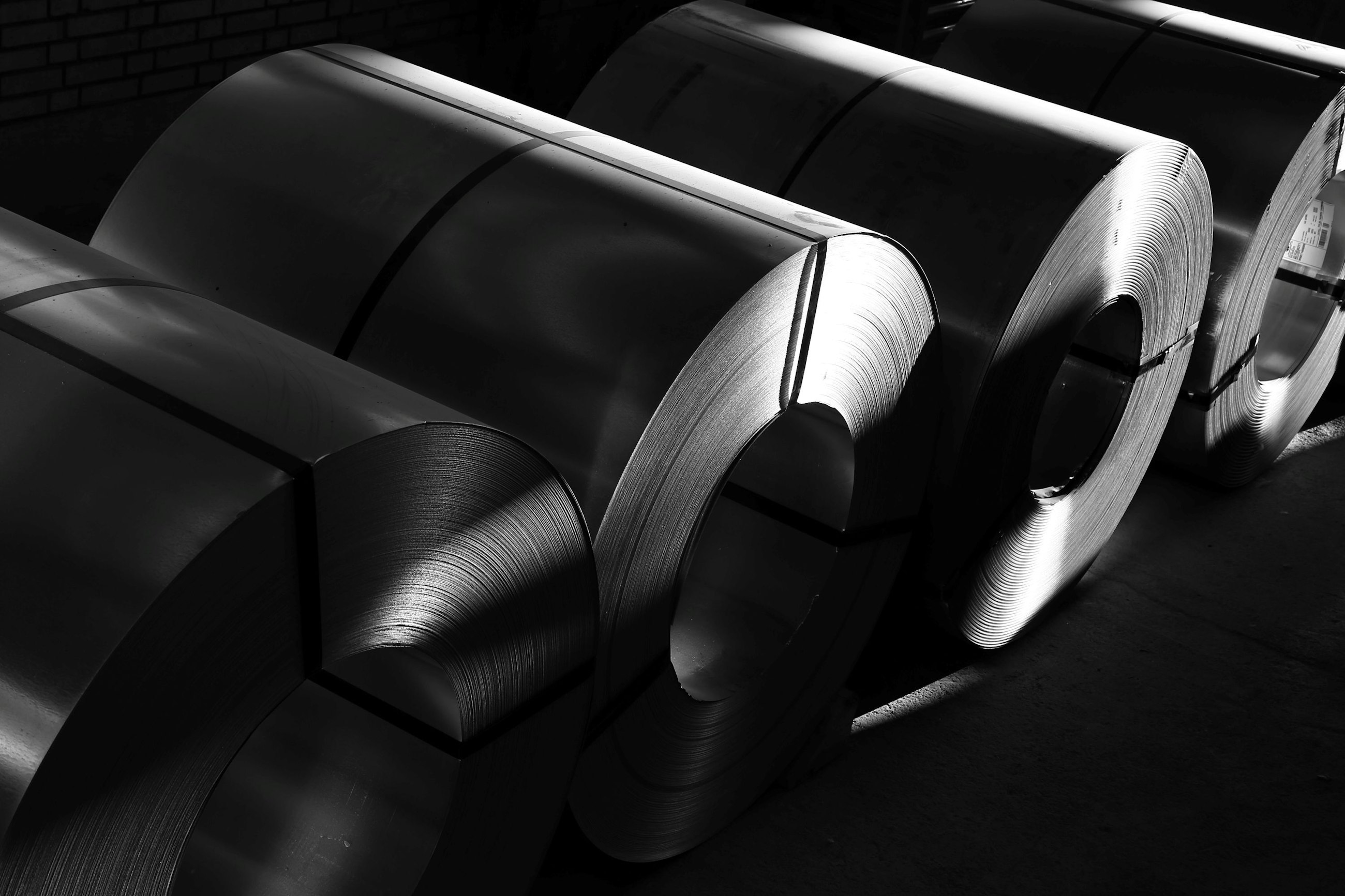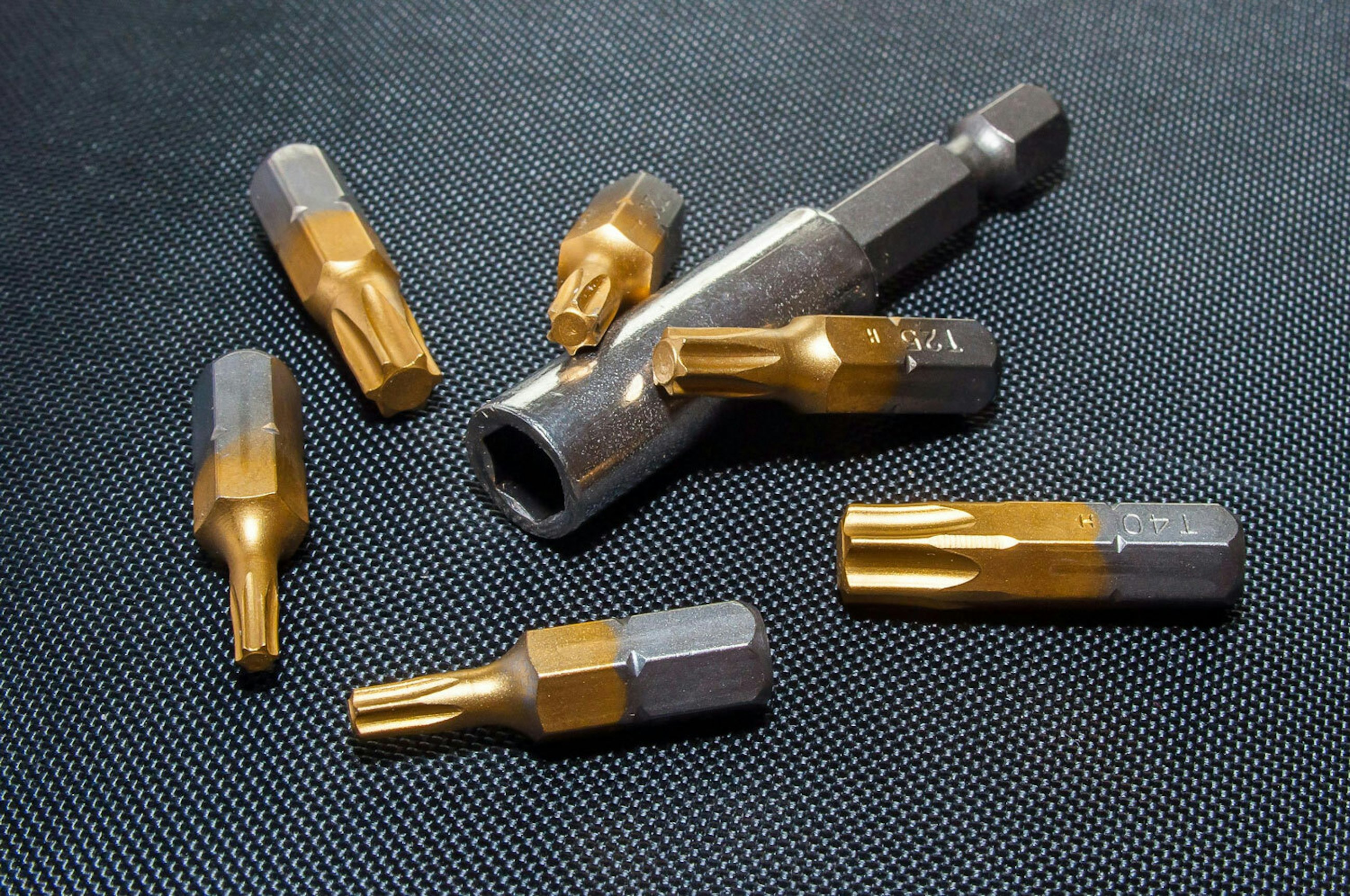26 April 2019
Conflicting requirements and trends affecting your warehouse efficiency and cost
In this article, we will address the ever-increasing requirements affecting warehousing. There is the requirement to deliver impact and advantages for the overall supply chain and business – not to mention the increased requirements from customers, both internal and external. This is nothing new, but choosing the right treatment is quickly becoming more and more complex.
We will therefore try to provide you with input on how to approach and tackle the challenges by addressing the topic of shipping and packaging optimisation vs automation in the warehouse.
Trend 1: Automate
In some cases, you can solve the increased warehousing requirements by introducing automation and robotisation in your warehouse operations. And we are seeing an increasing number of videos of impressing highly automated warehouse operations going viral due to their impressive speed and complex movement patterns. One example is the below film about AI-based future logistics from Toyota.
Typical advantages and promises by such systems are:
- Autonomous robotics behaviour
- Reduced work time in the warehouse
- Minimised need for warehouse management systems
- Fast and precise process execution with little interference from warehouse personnel
We find the approach demonstrated in the above video interesting as it will be applicable for many warehouses (and especially DCs going forward) – it does, however, in our opinion, go against another major trend.
Trend 2: Higher demand for customised and consolidated orders
The trend of automating is opposed by a different trend in the warehouse. The trend of customised and consolidated orders.
The opposing trend is already a common sight within retail and online shopping and is quickly spreading to other businesses and even internal flows. Here, the criteria go towards smaller, customer- and order-specific picks – with a mix of different product categories (frozen, electronics, cold, ambient, heavy, odd-sized etc.) – all with different requirements and value-added services (VAS) in the warehouse inventory. This makes it harder and harder to consolidate more conventional boxes or pallets of goods for shipping without human intervention or picking robots, typically with longer lead time as a result.
At the same time, customer requirements increase with customers expecting shorter and shorter lead time. Therefore, an optimised supply chain, covering both ordering, shipping and transportation, is needed to justify the sacrifice of optimal loading sizes.
As a result, one very difficult balance in the future will be to build a valid business case on where to “sacrifice” optimal load/packaging sizes in the transportation units vs lead time and picking/ranking savings via robotics.
How to strike the right balance?
For organisations working within logistics and warehousing, the above topics are of course multifaceted. However, some overall questions worth considering could be:
- How do I balance my options and existing processes against automation and ensure actual impact while achieving cost optimisation?
- How do I ensure customer satisfaction and short lead time whilst maintaining optimised transport?
- How do I build valid business cases for automation without compromising flexibility in the current processes?
Assess your current balance between complexity and automation
Not only are our recommendations on the subject complex, so is the answer. And in general, it is difficult to provide a unified answer that will apply to all businesses. There are, however, some guidelines that can give indications on how and where to make the right balance in your warehouse management.
You can gather inspiration from the questions below, even though the example is somewhat simplified.
- Do my shipping units consist of multiple products varying in both size and weight?
- Does my route planning happen on a short-term scale and typically include changes on the day of transport?
- Does my picking of finished goods consist of picks from multiple areas followed by a consolidation and/or additional packaging before it is ready to ship?
- Does some of my articles require additional operations or packaging/wrapping before departure?
If you can answer yes to most of the questions, your business probably leans towards a more customer-oriented and flexible requirement. On the other hand, if you’re able to answer no to the questions above, your end product and business are more likely to be suited for automated solutions in this part of the process.
So, where can I apply and utilise automation if I drive a complex business?
The short answer is that you can apply it throughout the warehousing operations. Technology is rapidly developing, and as seen in the Toyota video above, the picking and even consolidation are becoming more and more flexible.
This will be applicable for all businesses and warehouses further down the road. Here and now, we see a higher tendency to utilise AGVs and robotics for the put-away, internal transport and staging flows, whereas picking for outbound to a larger extent requires human interaction.
When you, in the near future, embark on analysing your warehouse and storage processes and the cost drivers behind them, you will most likely see data showing that different materials and material types require different handling in the warehouse and storage. And as a result, different material types have different potential for automation. Picking and shipping of full pallets is easy and quick compared to customer-specific requirements or consolidated pallets. For this reason, we recommend that you prioritise and focus your energy towards no more than three segments to begin with.
Start by performing an “ease of implementation vs impact” matrix in which you score each initiative:
Once you have a clearer overview of your processes and their cost drivers, it is worth noticing that even though your process might score high on impact and easy implementation, it still might not be suitable for automation.
Consider a third dimension, illustrated through the figure below, when evaluating your most ideal automation process candidates:
In short, the figure illustrates that despite your process being an obvious candidate for automation, it will only have a successful impact and realisation if the process remains static and has a certain level of foreseeability. Thus, when you evaluate, be critical of your process candidates and ensure a fixed setting and surrounding to increase the success rate of your automated process.
How to start?
Knowing your own business in detail, you probably already have a relatively good idea of where your current cost drivers are within the warehouse. If your warehouse resembles most others, the picking process is by far the costliest to manage. Despite the assumptions, we recommend that you spend a good amount of time on analysing and understanding the process requirements behind each operation.
Keeping in mind that once flow, capacity, volume, frequency, safety and bottleneck analyses are in place, they might point to utilising different solutions and degrees of automation for each separate operation. And we sometimes see surprising results on where the biggest cost drivers are hiding, and where automation is applicable.
Once you have established an overview of your warehouse cost drivers and analysed the requirements for each material group and customer requirements, you are ready to start on the journey towards automating selected processes.
From our side, we would also recommend that you “think big, start small”, meaning that there is also an aspect of learning as you go along – or even prototyping the automation if possible. And if you start out with a smaller automation project to target a key operation or process in your warehouse, e.g. introducing a packaging robot or an AGV, it could prove a valuable and cost-efficient way of preparing the entire organisation for more automation – given that it is beneficial from an impact point of view.
In all this, it is important that you recognise that regardless of how well thought-out the system, automation and process behind it are – it will only work if the daily workers and operators trust and rely on the outcome and performance of the automated steps.
Good luck!








